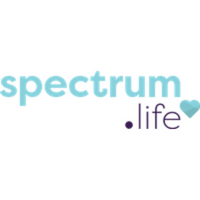Ways to ensure your EAP provides a service that is inclusive of all employees
The past two years have seen a renewed focus on the importance of supporting employee mental health, and providing external services to those who may require a greater level of assistance. Equally as important is ensuring that support, such as your employee assistance programme (EAP), is accessible and inclusive to all of your employees.
1. Assess the diversity of the provider’s network
Whether you are providing access to an EAP, counselling service, mental health coaching, or another mental health support service, it’s important to weigh up the network of coaches, counsellors and therapists that your employees will have access to.
What languages can the provider offer their services in? Do they have staff trained and experienced in dealing with issues relating to race, ethnicity, LGBTQ+, and people with disabilities? If an employee has a preference to speak to someone of a specific gender, race or ethnicity, can the provider support this?
Asking these questions when introducing new external supports or reassessing the support you currently provide, can help ensure that your entire employee base feel comfortable engaging with these services.
2. Involve your DEI committee in the process
When assessing the employee mental health and wellbeing services that you put in place, consider engaging your internal diversity, equity and inclusion committee in the review process. Ask for the thoughts of the members of this committee on issues employees from minority backgrounds may be likely to engage with support services about, such as racism, sexism or workplace bullying. Discuss these topics with the EAP, coaching or counselling service provider to ensure they have a network of staff skilled and experienced in working with individuals affected by these issues.
3. Consider if the service offering meets employee needs
EAPs have become a valuable tool in supporting the wellbeing and mental health of all employees. However, as employee needs continue to evolve rapidly, it’s important that we ensure the supports available keep pace with this change.
Some employees, for example, may feel like traditional therapy offered via an EAP doesn’t align with their needs. For these employees, intervention in the form of coaching may be more beneficial and fitting for their situation. When introducing new supports for your employees, take time to consider who the offering is likely to appeal to. Will it just appeal to one subset of employees or, if it is a tiered support structure offering multiple forms of intervention, including coaching, counselling and specialist therapy, will this be better positioned to allow employees to find the support which best fits their needs.
4. Provide ongoing feedback to your service provider
Whether you are introducing a new EAP, coaching or counselling service for your employees or you already have these services in place, it can be a good idea to assess your feedback loop with the provider. Do you have regular meetings with the provider? If so, could your business benefit by establishing or reactivating an EAP advisory committee?
Establishing an EAP advisory committee with people from across your business representing the different demographics in your workforce, may allow you to improve the feedback you can give to your support services provider. This will enable you to offer a platform for issues affecting minority groups to be vocalised and flagged with your service provider.
Ensuring that the mental health and wellbeing services you have in place are accessible to all employees is as important as introducing these supports in the first place. While checking that the services are available in all the languages that your employees may speak is a good starting point, ensuring these services are inclusive of all employees must go beyond thinking about language. Engage your employees in the process when introducing new mental health services and ensure that the service provider can respond effectively to issues likely to impact on employees from minority backgrounds.
This article is provided by Spectrum Health.
Supplied by REBA Associate Member, Spectrum Life
Supporting 4m+ lives in the corporate, education and insurance sectors with our health & wellbeing solutions.”








